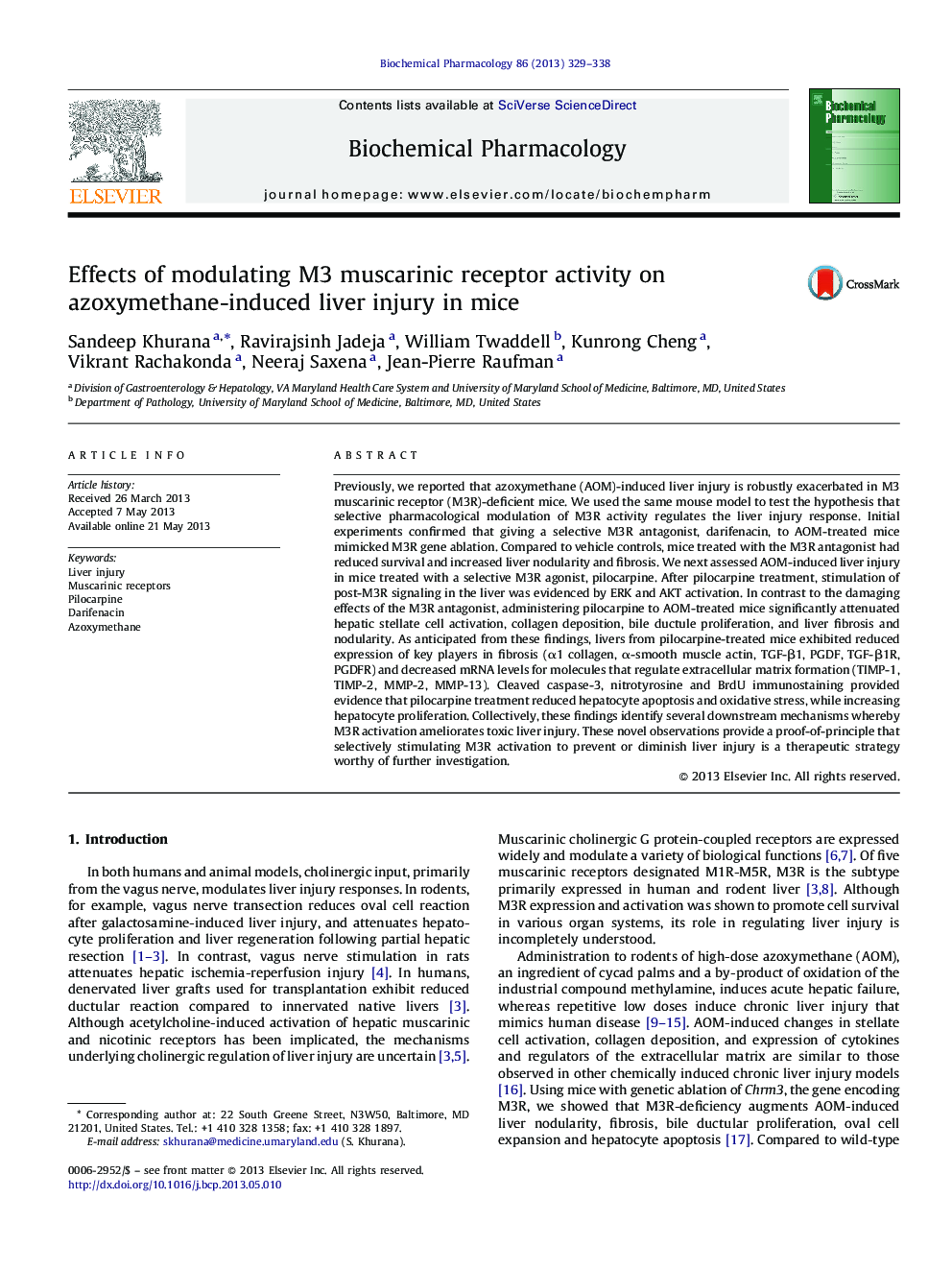| کد مقاله | کد نشریه | سال انتشار | مقاله انگلیسی | نسخه تمام متن |
|---|---|---|---|---|
| 2512612 | 1118362 | 2013 | 10 صفحه PDF | دانلود رایگان |

Previously, we reported that azoxymethane (AOM)-induced liver injury is robustly exacerbated in M3 muscarinic receptor (M3R)-deficient mice. We used the same mouse model to test the hypothesis that selective pharmacological modulation of M3R activity regulates the liver injury response. Initial experiments confirmed that giving a selective M3R antagonist, darifenacin, to AOM-treated mice mimicked M3R gene ablation. Compared to vehicle controls, mice treated with the M3R antagonist had reduced survival and increased liver nodularity and fibrosis. We next assessed AOM-induced liver injury in mice treated with a selective M3R agonist, pilocarpine. After pilocarpine treatment, stimulation of post-M3R signaling in the liver was evidenced by ERK and AKT activation. In contrast to the damaging effects of the M3R antagonist, administering pilocarpine to AOM-treated mice significantly attenuated hepatic stellate cell activation, collagen deposition, bile ductule proliferation, and liver fibrosis and nodularity. As anticipated from these findings, livers from pilocarpine-treated mice exhibited reduced expression of key players in fibrosis (α1 collagen, α-smooth muscle actin, TGF-β1, PGDF, TGF-β1R, PGDFR) and decreased mRNA levels for molecules that regulate extracellular matrix formation (TIMP-1, TIMP-2, MMP-2, MMP-13). Cleaved caspase-3, nitrotyrosine and BrdU immunostaining provided evidence that pilocarpine treatment reduced hepatocyte apoptosis and oxidative stress, while increasing hepatocyte proliferation. Collectively, these findings identify several downstream mechanisms whereby M3R activation ameliorates toxic liver injury. These novel observations provide a proof-of-principle that selectively stimulating M3R activation to prevent or diminish liver injury is a therapeutic strategy worthy of further investigation.
Figure optionsDownload as PowerPoint slide
Journal: Biochemical Pharmacology - Volume 86, Issue 2, 15 July 2013, Pages 329–338